By Mike Smith
I had the pleasure of writing an e-book titled How Pep Guardiola Wins with Inverted Fullbacks. During my research I discovered how much focus Guardiola put on “ half spaces” and how effective this understanding had been to Man City’s success. In addition, I began to understand how the majority of the time, to utilize the half spaces across the entire pitch, Man City’s shape often represented a 5-5 formation as opposed to a traditional 3 line set up. I have used a simplistic version of this with my high school team and we are off to our best start in a decade and the second best start to a season in school history ( which dates back to the 70s). Just a simple understanding of what and where the half spaces are has helped my guys understand spacing and shape much better than in years past. So while not even to a level worth mentioning in the same sentence as Man City, a basic understanding of half spaces and the 5-5 shape is worth a look, especially if your side struggles with shape and spacing.
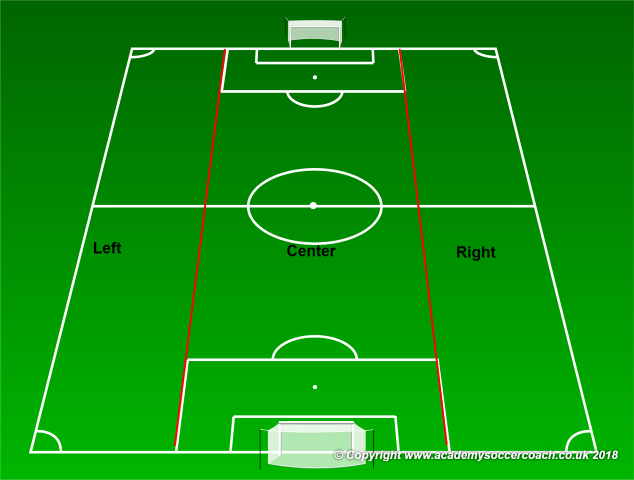
Above is a traditional, thirds of the field set up. This matches the idea of defensive, transition and attacking thirds going up and down the field. The idea of half spaces divides the field this way:
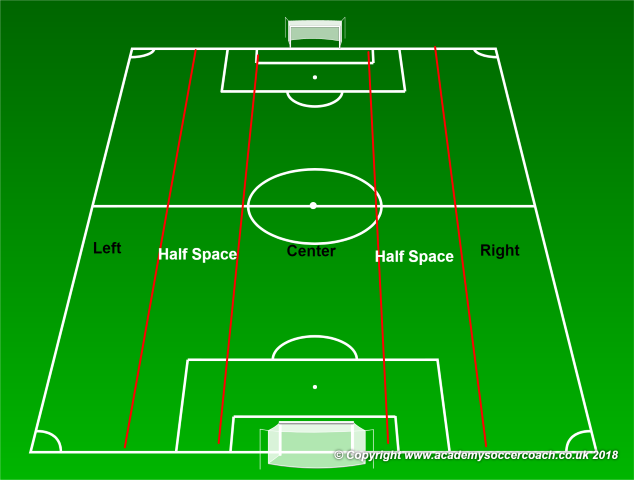
As shown above, these half spaces are “ half center” and “ half right ( or left )” and just this bit of understanding helps players to not get too bunched up in one section of the field. From a possession stand point, keeping 2 players in each half space, the 5-5, creates the “perfect world” as far as triangle possession by creating 3 and 4 v 1s all over the pitch ( shown below )
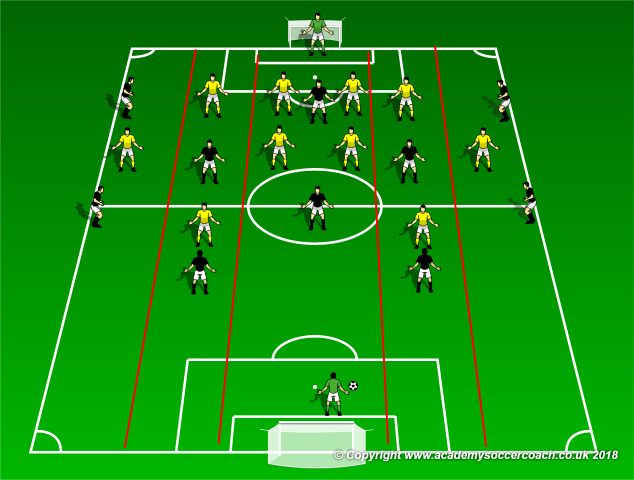
The concept is clear, 4 v 1, 4 v 2, 3 v 1 all over the field. While I don’t spread the field this wide as my current team doesn’t have the mobility to do so, I have taught them about half spaces to help them avoid bunching up, or isolating themselves too wide in support. For me at the high school level it looks more like this:
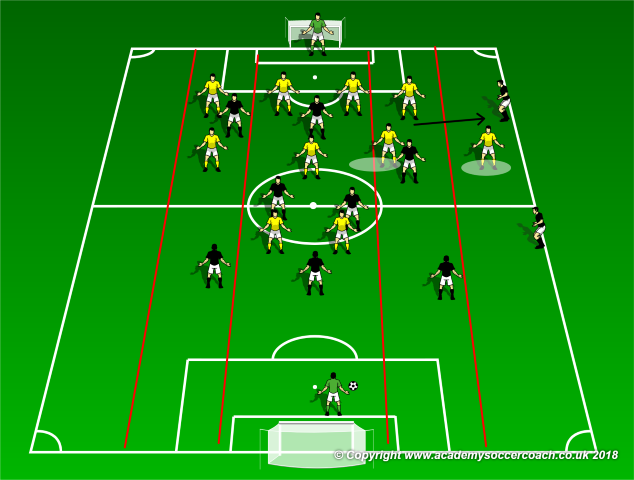
While keeping numbers up in the center, our goal is to create a 3 v 1 out on one wing with two players wide and one central player in the half space. IF another defender moves out, this creates a 3 v 1 between our central forward, wide mid (or forward) and midfielder holding in the half space ( isolated defenders are highlighted ). Any shift from the defense to match our numbers exposes space for the third forward or midfielder sneaking up in the far half space. If you think this understanding of half spaces can be as beneficial to your team as I do, try using this 5 v 2 progression to help your team think half spaces and perhaps even two groups of 5.
Set Up
Set up 5 10 yd x 15 yd sections ( as shown below ) to simulate the half space concept. An attacking player is in each space. Two defenders attempt to pressure and regain the ball across all the spaces, the attacking players initially stay in their space. Play starts with a defender in each of the outside spaces. An attacker in the outside space ( see below ) starts 1 v 1 and must pass the ball to the attacker in the next space. When this pass is made, the defender from the far space may sprint over and join play, hopefully making it a 3 v 2 . The defenders then chase to the next space as the ball must move from attacker to attacker one space at a time. Good spacing and ball movement will obviously give the attackers the advantage. Attackers score points when every attacker has received the ball. Defenders score points by gaining possession and making one pass to the other defender.
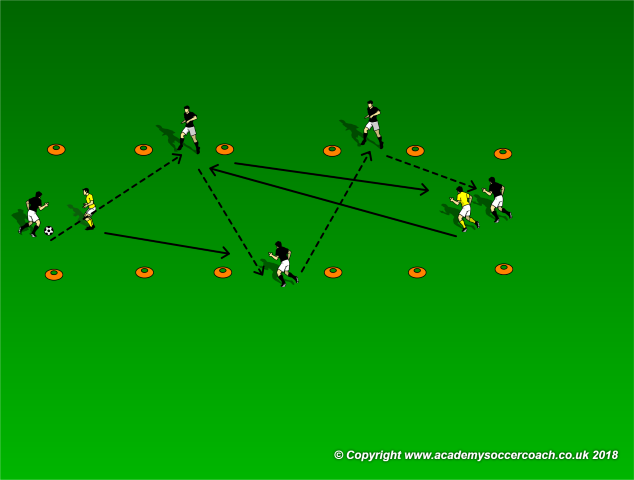
Progression
An additional defender may be added to complete the 3 v 1 idea as the half space set up of the attackers should always keep 3 triangles available.
Coaching Points
While it will be tempting, especially on the start, for the attackers to crowd in to support each other, the emphasis should be placed on finding good supporting and passing angles. Quick two touch and one touch passes will keep the defenders chasing and the coach should encourage the attackers to play as quickly as they can and still maintain accuracy.
By Mike Smith
Currently the Head Coach for University Heights Academy Boys Soccer in Hopkinsville, KY , Mike is in his 14th year as a high school head coach with 23 years coaching experience overall and 34 year as a student and fan of the game. He holds a USSF D License.


